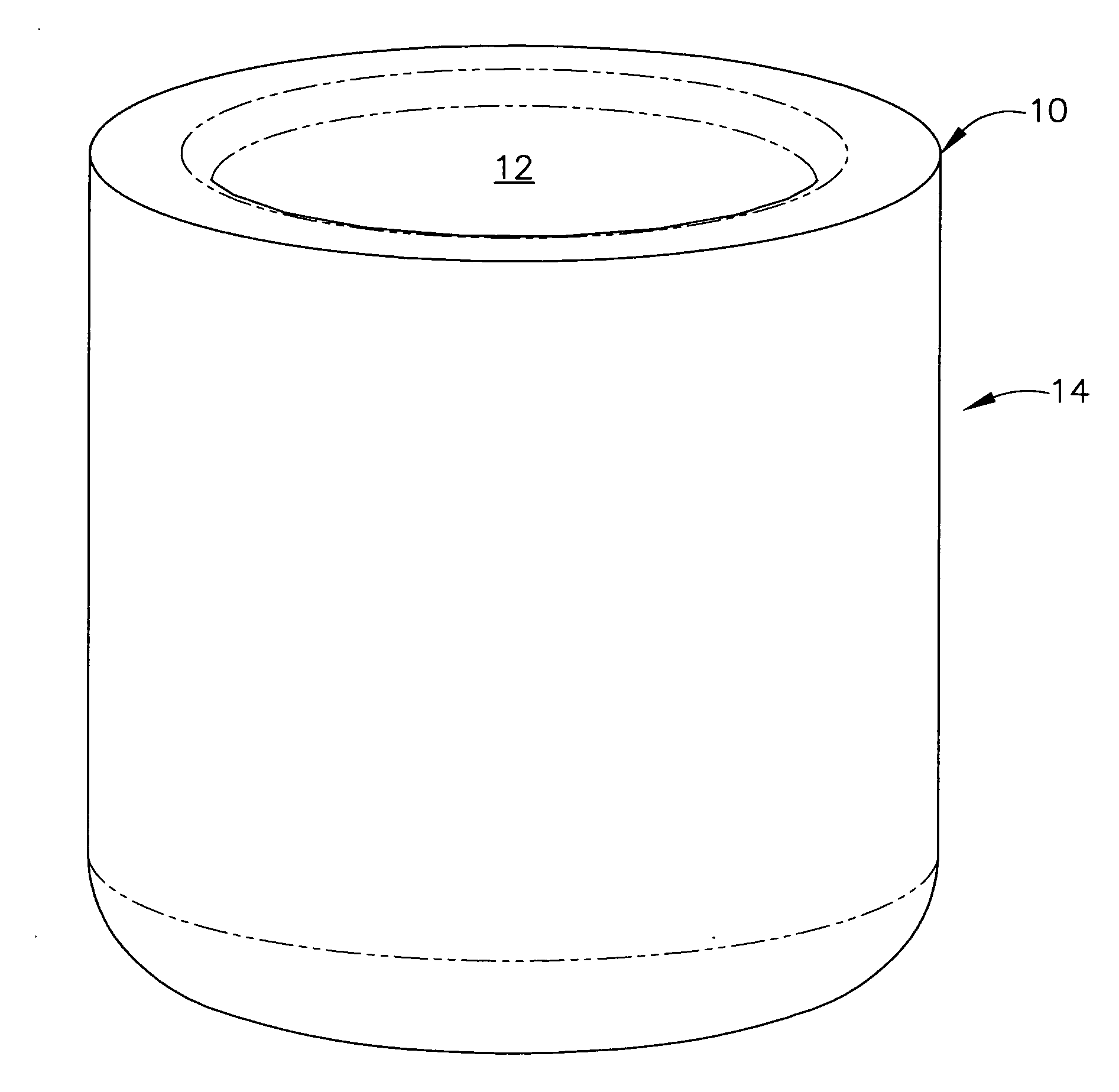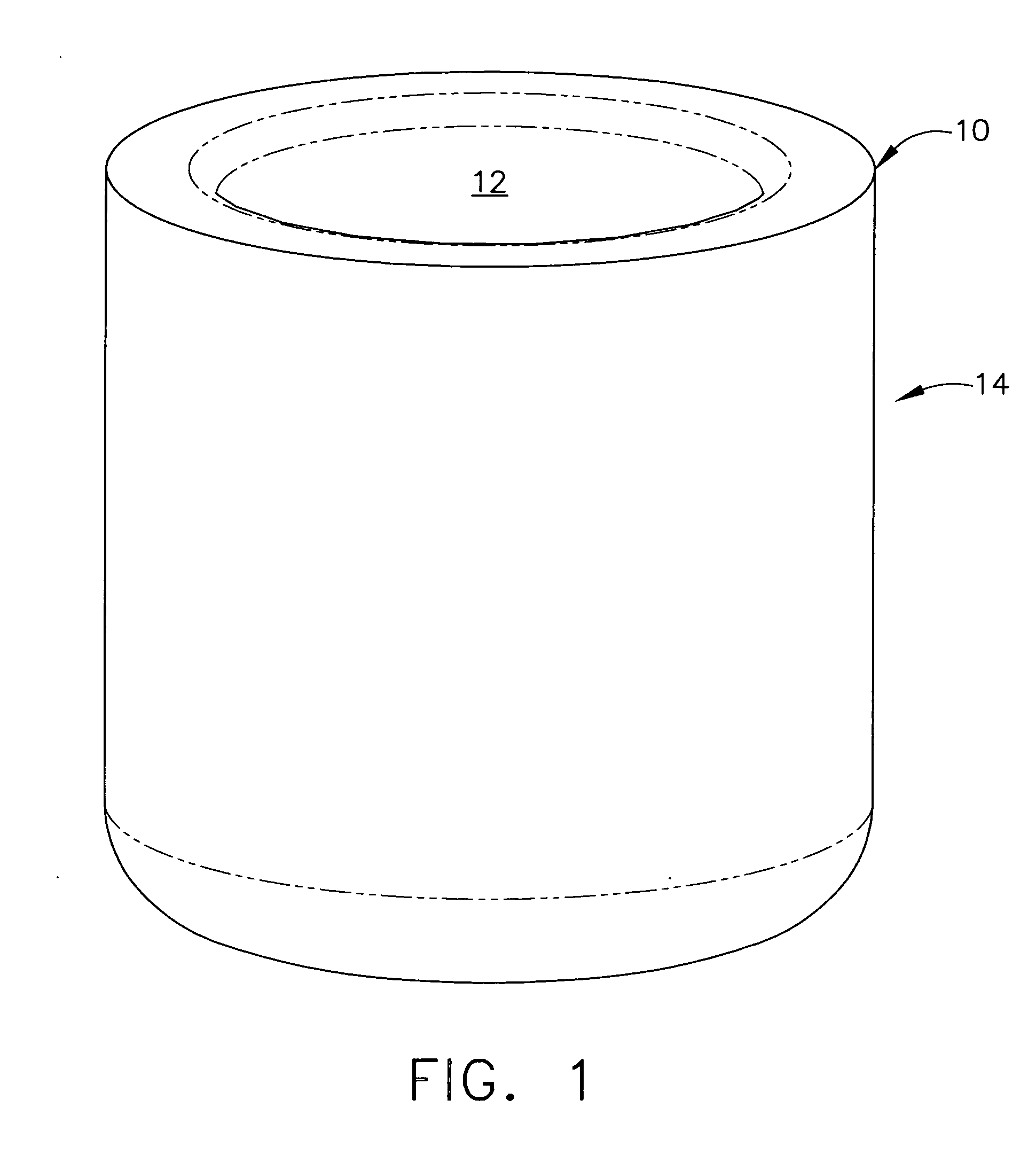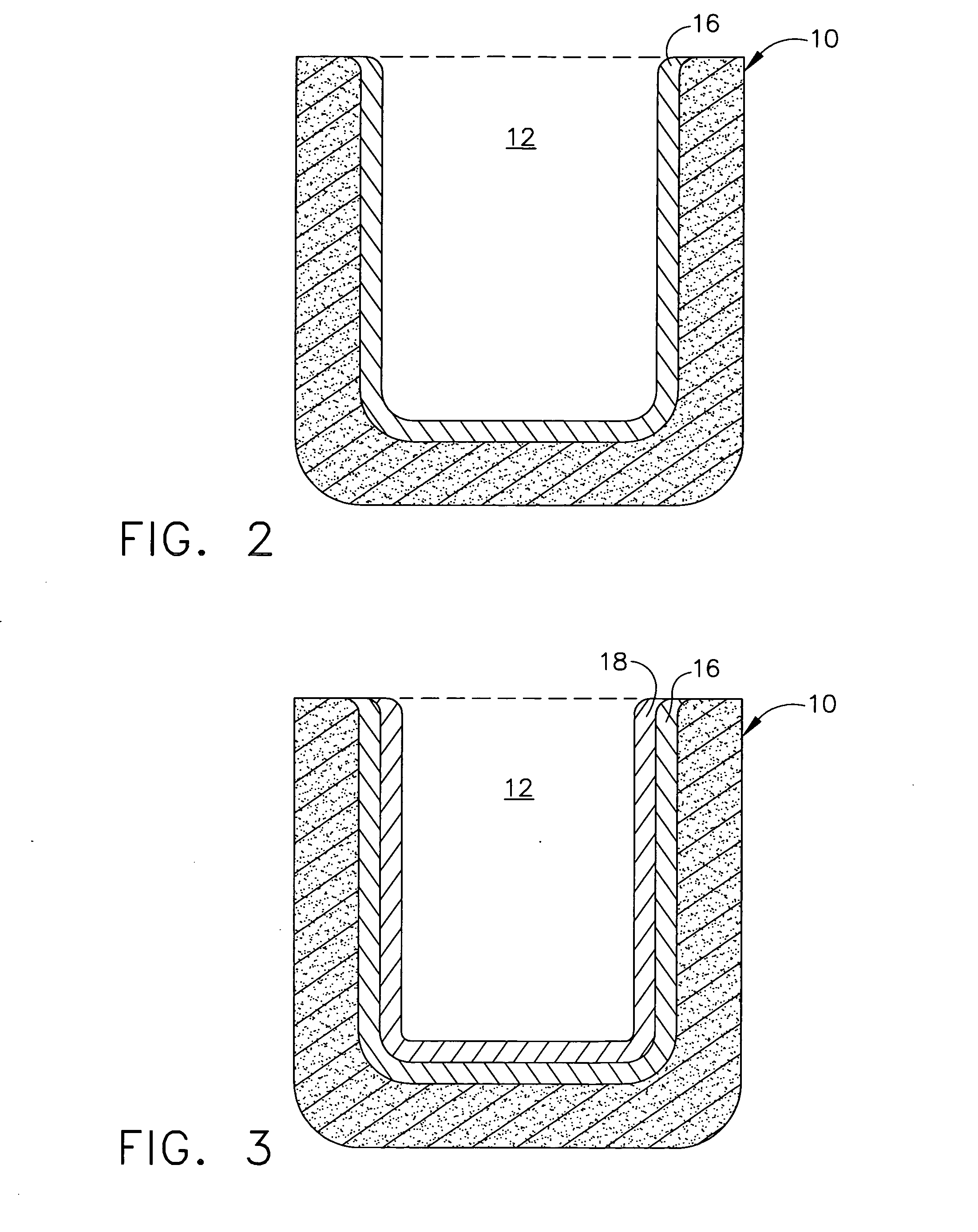Articles for use with highly reactive alloys
a technology of alloys and alloys, applied in the field of high-reactive alloys, can solve the problems of contaminating the titanium alloy, difficult to melt these high-reactive alloys, and high-reactive titanium aluminide (tial) , to achieve the effect of reducing the difficulty of melting, reducing the difficulty of forming, and improving the stability of the alloy
- Summary
- Abstract
- Description
- Claims
- Application Information
AI Technical Summary
Benefits of technology
Problems solved by technology
Method used
Image
Examples
Embodiment Construction
[0013]Embodiments described herein generally relate to articles having at least one protective layer for use with highly reactive alloys. In particular, embodiments herein relate to graphite crucibles having at least one protective layer comprising either a foil liner or a carbide coating as set forth below.
[0014]Turning to the figures, FIG. 1 illustrates one embodiment of an acceptable graphite crucible 10 for use herein. Graphite crucible 10 may be any graphite crucible known to those skilled in the art suitable for induction melting. Graphite crucible 10 can have an interior 12 for containing the alloy to be melted and an exterior 14.
[0015]Graphite crucible 10 may be used to melt highly reactive alloys such as, for example, those including the elements titanium, hafnium, iridium or rhenium, as well as advanced alloys including niobium, for example niobium silicide, or nickel, for example nickel aluminide. In one embodiment, the highly reactive alloy may comprise titanium aluminid...
PUM
| Property | Measurement | Unit |
|---|---|---|
| thickness | aaaaa | aaaaa |
| thickness | aaaaa | aaaaa |
| thickness | aaaaa | aaaaa |
Abstract
Description
Claims
Application Information
 Login to View More
Login to View More - R&D
- Intellectual Property
- Life Sciences
- Materials
- Tech Scout
- Unparalleled Data Quality
- Higher Quality Content
- 60% Fewer Hallucinations
Browse by: Latest US Patents, China's latest patents, Technical Efficacy Thesaurus, Application Domain, Technology Topic, Popular Technical Reports.
© 2025 PatSnap. All rights reserved.Legal|Privacy policy|Modern Slavery Act Transparency Statement|Sitemap|About US| Contact US: help@patsnap.com



